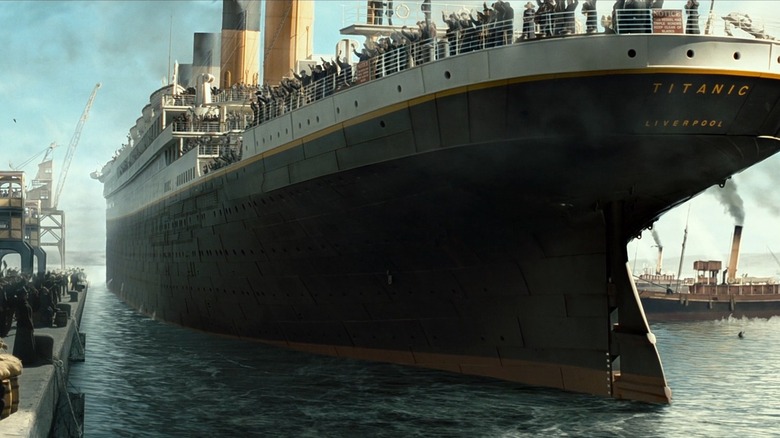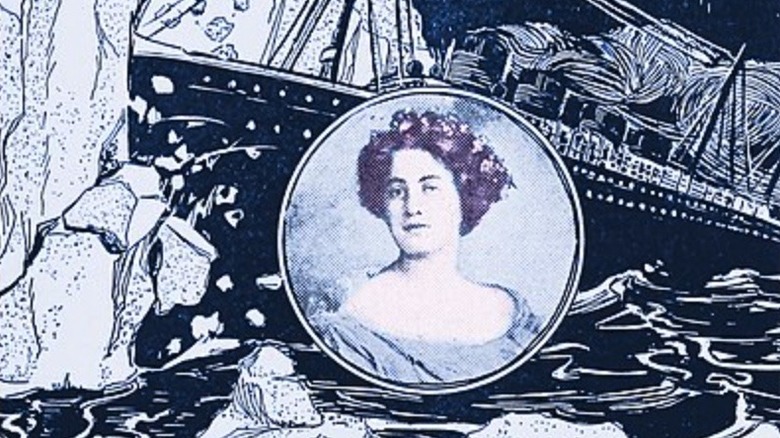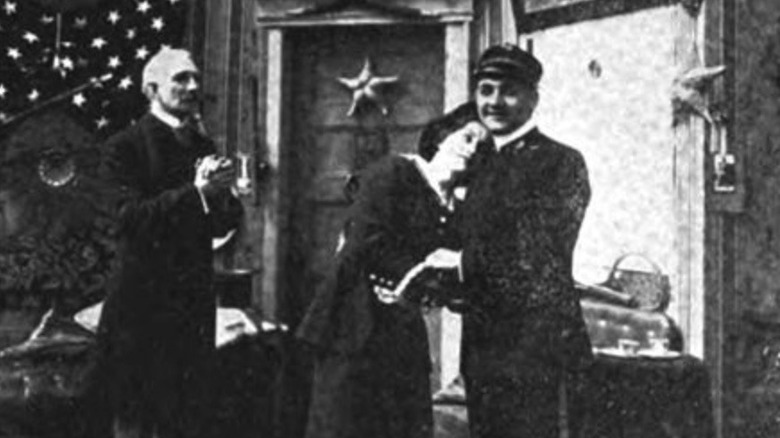The Titanic Survivor Who Starred In The First Movie About The Titanic
(To celebrate "Titanic" and its impending 25th-anniversary re-release, we've put together a week of explorations, inquires, and deep dives into James Cameron's box office-smashing disaster epic.)
James Cameron's "Titanic" reminded the world of the disastrous sinking of the "unsinkable" ocean liner after striking an iceberg in 1912. Over 1,500 people perished in the tragedy, though some were rescued by the RMS Carpathia hours later. One of the people who survived that terrible ordeal was 22-year-old actress Dorothy Gibson. Every survivor had a story to tell, but Gibson did something that no one else managed. She immediately put it on film.
The silent movie was "Saved from the Titanic," and it premiered on May 16, 1912, exactly a month to the day after the sinking took place. Gibson starred as a Titanic survivor, which she was, asking her fictional fiancé (named Jack, oddly enough and played by future director John G. Adolfi) to give up a life at sea after her ordeal. The film, which the Éclair Moving Picture Company made, was lost in a fire at their Fort Lee, New Jersey studio in 1914, leaving only a few stills and promotional images as evidence. Gibson co-wrote the film as well. Her own story is incredibly harrowing and absolutely gut-wrenching.
'There suddenly came this long, drawn, sickening scrunch'
Dorothy Gibson was a star of stage and screen with plays like the Broadway musical "The Dairymaids," and films like "Hands Across the Sea" in 1911 and "A Lucky Holdup" in 1912, which was released while the Titanic was at sea. Gibson had been in Italy on vacation with her mother, according to a 1998 story in the LA Times, when she was called back to Fort Lee by her studio. She and her mother boarded the Titanic, and Gibson played cards with friends the night of the disaster, meaning they were awake when the ship hit the iceberg that caused it to sink. According to the article, Gibson said of that moment, "No sooner had I stepped into my apartment than there suddenly came this long, drawn, sickening scrunch." (Some sources say "crunch.") She noted that the deck was lopsided as she walked back.
Gibson, her mother, and the two other card players joined 24 other people (and one dog) who boarded Lifeboat #7, the first one to be lowered to the sea. It could have held 65, but as you likely know, many of the lifeboats weren't filled to capacity. The boat didn't have its plug in place, and the passengers had to shove clothing into it to keep the boat from filling with water.
They waited hours to be rescued, and when Gibson and the other survivors returned to New York City, the original destination, she adapted the story for the screen in a 10-minute reel, which was normal for the time. Gibson wore the clothing she'd been in the night of the tragedy, including "a white evening dress, long sweater, gloves and a pair of black pumps."
A lost account of a famous tragedy
The film incorporated performances, stock footage of icebergs, footage of the Titanic's launch, and the Titanic's captain Edward Smith on its sister ship, the RMS Olympia, to convey the event's details.
The entire experience was, of course, traumatizing for Dorothy Gibson. She told Moving Picture World (via Encyclopedia Titanica), "I will never forget the terrible cry that rang out from people who were thrown into the sea and others who were afraid for their loved ones." The trauma she suffered led her to retire from film work. She moved on to an opera career after "Saved from the Titanic." Gibson died in 1946 at the age of 56.
The film itself was hugely successful, according to The History Press, and was the first of many films about the event. The second film made about the Titanic was a German film called "In Nacht und Eis" ("In Night and Ice"), which was released only a few months after "Saved from the Titanic." It was thought lost until a print was discovered in the hands of a private collector in Berlin in 1998.
"Titanic" will be re-released in theaters on February 10, 2023.


